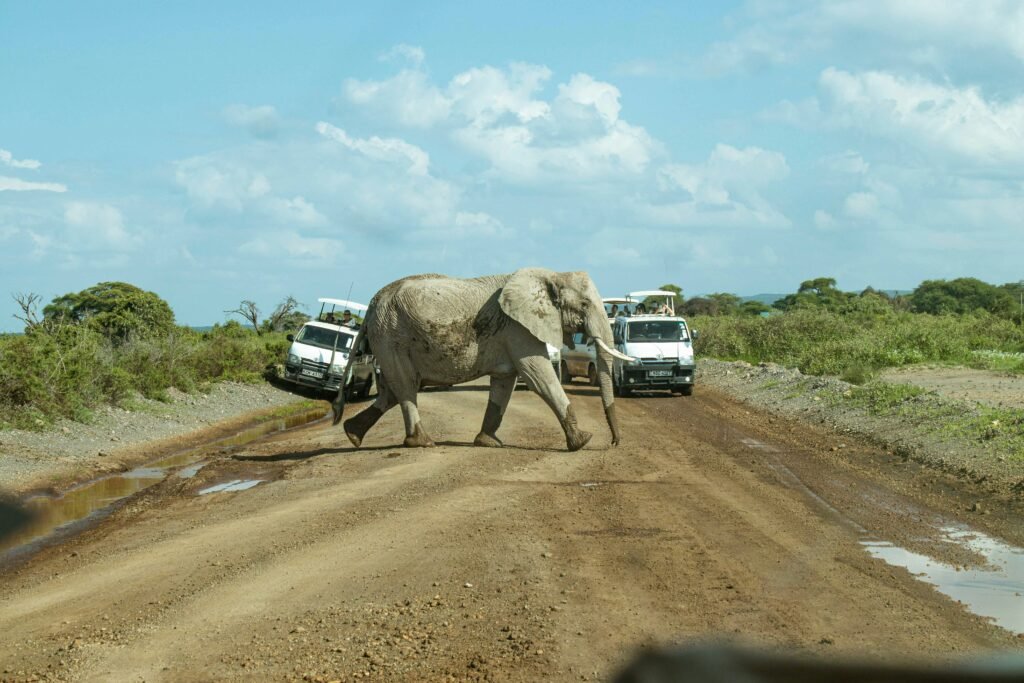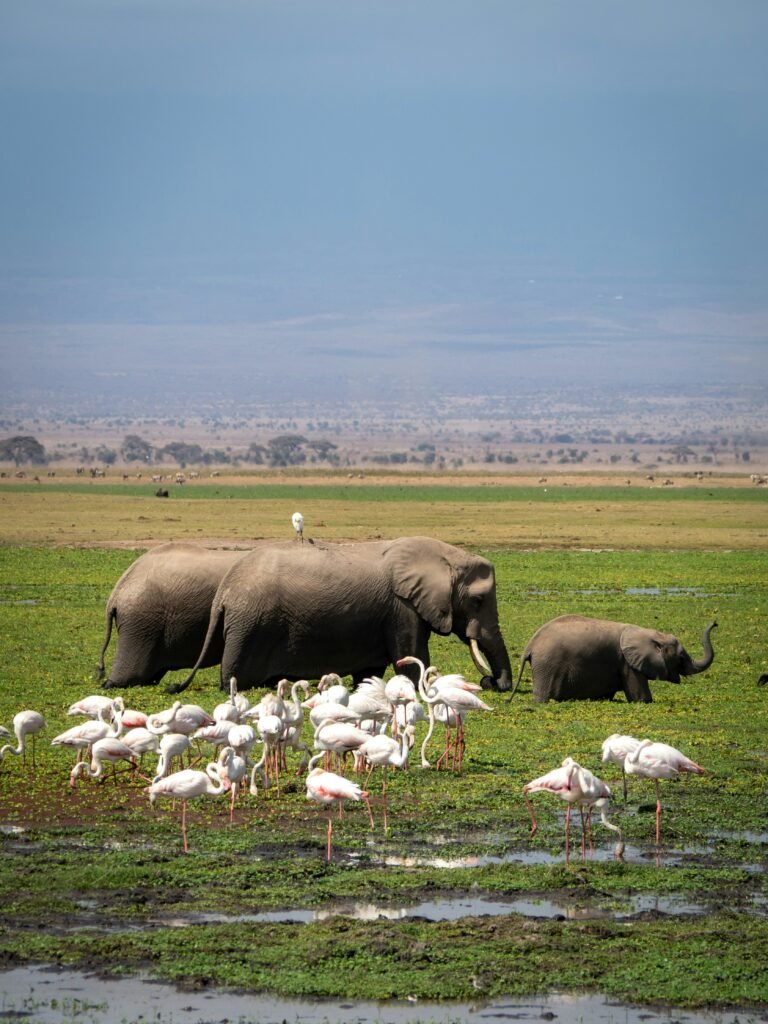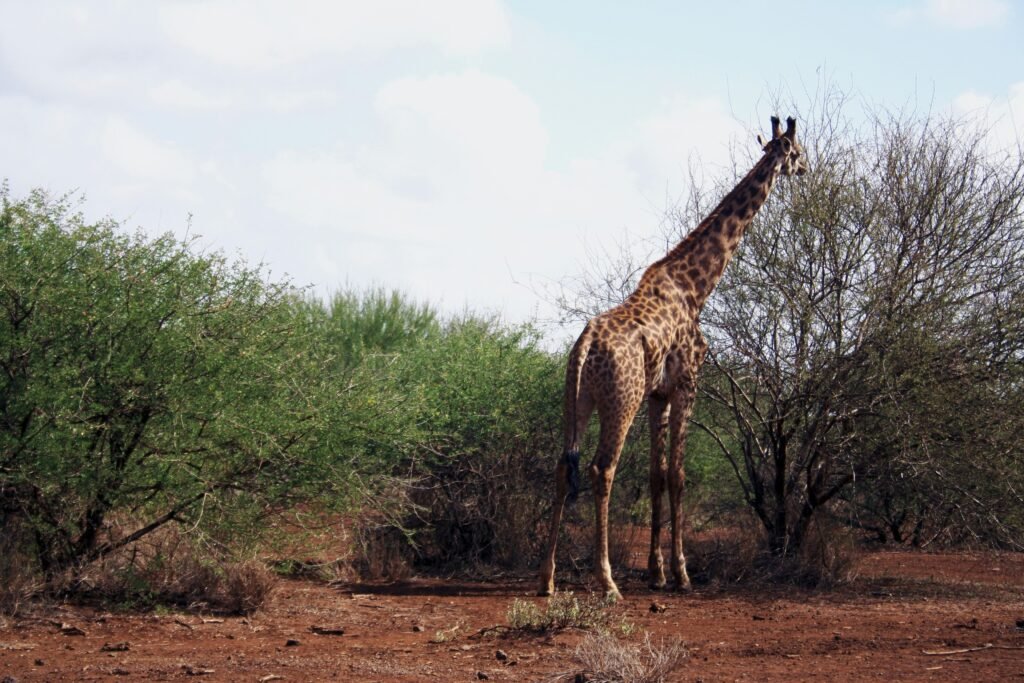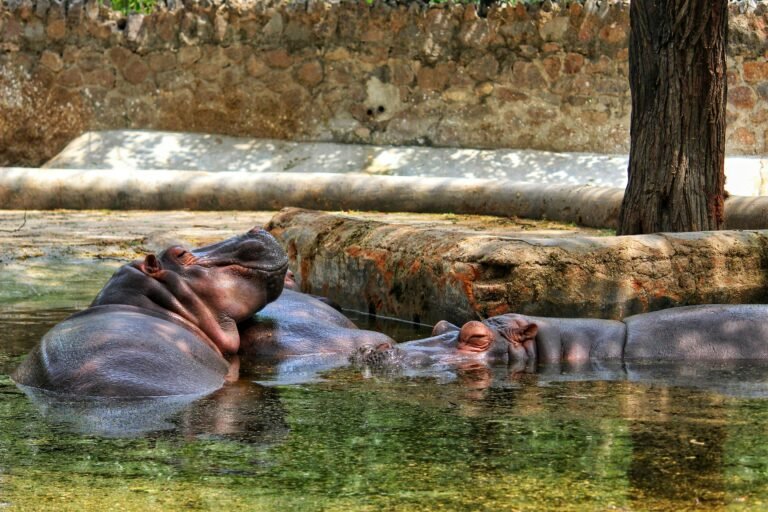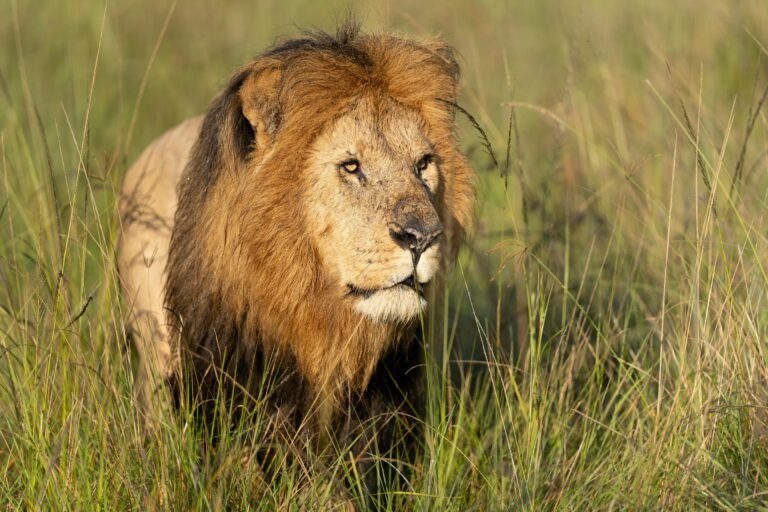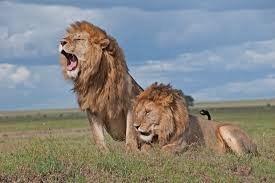This 6-day Kenya safari offers a diverse and scenic adventure through some of the country’s most iconic wildlife destinations. The journey begins on Days 1 and 2 with a visit to Amboseli National Park, famous for its breathtaking views of Mount Kilimanjaro and large elephant herds. On Day 3, the tour continues to Lake Naivasha, where visitors can enjoy serene boat rides and spot hippos and birdlife. Days 4 and 5 are spent at Lake Nakuru National Park, known for its vibrant flamingo populations, rhinos, and picturesque lake views. The safari culminates on Day 6 with a visit to the world-renowned Masai Mara National Reserve, home to abundant wildlife, the Big Five, and seasonal highlights like the Great Migration. This itinerary is perfect for travelers seeking a well-rounded safari that blends breathtaking scenery, diverse ecosystems, and unforgettable game viewing.
7-Day Thrilling Adventure Safari on a Budget
Duration
$1500.00
7-Day Thrilling Adventure Safari on a Budget
Highlights
Itinerary
This multi-day safari itinerary showcases some of Kenya’s most iconic wildlife destinations, offering a well-rounded journey through varied ecosystems. The adventure kicks off on Days 1 and 2 with a visit to Amboseli National Park, famous for its elephant herds and breathtaking views of Mount Kilimanjaro. On Day 3, the route heads to the serene shores of Lake Naivasha, where visitors can enjoy boat rides and birdwatching. Days 4 and 5 are spent in Lake Nakuru National Park, known for its vibrant birdlife, rhinos, and picturesque landscapes. The safari culminates on Day 6 with an unforgettable visit to the Masai Mara National Reserve, one of Africa’s premier wildlife havens, where guests can experience thrilling game drives and possibly witness the Great Migration. This itinerary is perfect for travelers seeking a diverse and immersive safari across Kenya’s top parks.
Tour Plan
Expand All
Day 1 – 2: Nairobi to Amboseli National Park
Arrive in Nairobi and begin your journey to Amboseli National Park, known for its vast elephant herds and stunning views of Mount Kilimanjaro. Enjoy scenic drives, check in to your lodge or camp, and take your first game drive. On Day 2, spend the full day exploring Amboseli’s unique ecosystem of swamps, acacia woodlands, and open plains, encountering a wide variety of wildlife.
Day 3: Lake Naivasha
Depart Amboseli and drive towards the Rift Valley region to Lake Naivasha. Arrive in time for lunch and enjoy an afternoon boat ride across the lake. Spot hippos, water birds, and possibly giraffes along the shoreline. Optional walking safari on Crescent Island offers an up-close encounter with wildlife in a tranquil setting.
Day 4 – 5: Lake Nakuru National Park
Continue to Lake Nakuru National Park, renowned for its flocks of flamingos, endangered black and white rhinos, and scenic landscapes. Day 4 includes a game drive around the lake and forested areas. On Day 5, enjoy another game drive before heading toward your next destination. Nakuru’s wildlife diversity includes leopards, buffalos, and tree-climbing lions.
Day 6: Masai Mara National Reserve
Make your way to the world-famous Masai Mara. Arrive in time for a late lunch and a thrilling afternoon game drive. The reserve is home to the Big Five and is known for its exceptional predator sightings and the Great Migration (seasonal). Settle into your lodge or camp and enjoy the sights and sounds of the African wilderness.
Questions & Answers
What happens in case of an emergency or sickness?
What happens in case of an emergency or sickness?
You are advised to get a travel insurance before embarking on safari to cover for lost property and medical...
You are advised to get a travel insurance before embarking on safari to cover for lost property and medical and emergency. The insurance is available locally at an added cost. Please enquire for more details on how you can get the cover. If you have purchased your cover and in the event of an emergency or sudden sickness while you’re on safari in East Africa, we guarantee medical evacuation to a hospital. The medical facilities in Nairobi offer a full staff of professionals along with state-of-the-art testing equipment. Your cover will pay for the Flying Doctors Service to come to your side. Most hotels and safari lodges you will visit has in-house doctor who will attend to you in case of a need.
What kind of clothes do I wear on safari?
What kind of clothes do I wear on safari?
Normal, comfortable fitting, neutral coloured clothes like khaki and cotton travel well, and pale earth...
Normal, comfortable fitting, neutral coloured clothes like khaki and cotton travel well, and pale earth colors such as brown, tan or olive are best for viewing wildlife and birds. Camouflage clothes are illegal in many African countries. Solid-colored safari clothes, however, are practical and widely available; Comfortable, closed walking shoes such as topsiders or running/tennis shoes with socks, are recommended over sandals; thorns are everywhere, and socks with your shoes deter mosquito bites. Also, opt for pants or leggings to avoid insect bites. Include a lightweight raincoat or jacket, and a swimsuit (many lodges have pools.) Safari hat would be convenient to avoid sunburn as well. A nice dress is useful for hotels, clubs, casinos and restaurants in Nairobi, where men need to wear a jacket and tie. The 5star Safari game lodges will not seat dinner guests wearing vests, shorts, swim wear. As for beach hotels they do enforce a dress code of “Smart Casual.” Safari/Bermuda shorts are unwelcome at most dining rooms; visitors should dress conservatively in Islamic communities (Lamu, Mombasa, Zanzibar;) long sleeves and long pants also deter mosquitoes and sunburn. Laundry service is available at most lodges and even tented camps, but be very clear about when you need your clothes returned. Take at least three changes of clothes for a week on safari, plus your own detergent to wash a few things. Dry cleaners are rarer than rhinos. The best advice is to travel light, and wear cotton.
How much should I tip on safari?
How much should I tip on safari?
Tips to driver/guides, tour managers and guides are own discretion, but customary they are highly appreciated...
Tips to driver/guides, tour managers and guides are own discretion, but customary they are highly appreciated for a job well done. For your Tour guide/driver $10.00 per tourist per day is the recommended amount for most safaris. At lodges and camps, the recommended tips are $10.00 per tourist per day to be shared among camp personnel.
How do I get cash for my personal use?
How do I get cash for my personal use?
Since you will be met upon arrival at the airport and escorted to your hotel, you will not need any local...
Since you will be met upon arrival at the airport and escorted to your hotel, you will not need any local currency before you reach the hotel, where you can obtain it. However, if time permits, airport exchanges often give better rates than hotels. There is now a large number of registered For-Ex Bureaus where you can change your money safely and at excellent rates. Major Credit Cards are often accepted in larger towns and at lodges, but in markets and with vendors along the road, cash works best, and bargaining is expected. We recommend that you take traveler’s checks rather than carrying large amounts of cash. Many travelers find it useful to carry a hand calculator to estimate dollar values while shopping. ATM machines are not widespread and may only be found in major capitals; consult your own bank before departure. In Kenya, the local currency is Kenyan Shillings
How much money should I take?
How much money should I take?
Aside from shopping, you need money for drinks, tips and incidentals. Experience has shown that most...
Aside from shopping, you need money for drinks, tips and incidentals. Experience has shown that most clients spend between $500 and $1000. The shops are full of tempting items. Major credit cards and travelers checks are accepted in major hotels and stores, but some game lodges and rural shops accept only cash. We also recommend that you take traveler’s checks rather than cash with you. Do not keep all valuables in one place, such as a purse, that could be lost. It’s a good idea, if you have more than one credit card to keep the second in a separate pocket or locked in the hotel safe. Your airline ticket will be collected by our office upon arrival in Nairobi for reconfirmation of your return flights.
Is a safari dangerous?
Is a safari dangerous?
No, not if you stay within the marked boundaries of your lodge or in your safari vehicle. Your guide...
No, not if you stay within the marked boundaries of your lodge or in your safari vehicle. Your guide and driver know what is, and is not, safe. Incidents involving animals are rare in East Africa and are, almost without fail, the result of someone doing what they have been advised not to do. Avoid wearing flashy jewelry and bringing too much cash, and always hold onto your purse and camera bag. Beware of clever conmen, some of them pose as police officers, and don’t walk in the city at night nor alone in an empty beach. Also, do not wear money belts, since they can easily be cut off from the rear. It is always a good idea when you travel to keep a photocopy of your passport in your luggage and another at home. It’s a fact that traveling on safari is safer than traveling in most U.S. cities. The people are friendly, and the government patrols the game parks – their most treasured resource- for the safety and benefit of all.
What kinds of animals will I see?
What kinds of animals will I see?
In a typical day you can expect to see 15 to 40 animal species- lions, elephants, giraffes and rhinos,...
In a typical day you can expect to see 15 to 40 animal species- lions, elephants, giraffes and rhinos, to name a few. Buffalo and wildebeest may be in herds of hundreds or more. Others, like the swift cheetah, are more likely to be found alone. And then there are the birds, over 300 species! Birds in Africa are particularly colorful and easy to spot. Even if you’ve never looked at a bird before, with the help of your driver you’ll easily learn to identify twenty to thirty of the most striking and beautiful birds of Africa. Experienced birders can expect to see 60 to 100 different species in a single day. A special thrill is in store if your safari coincides with the annual wildebeest migration. You’ll see thunderous herds of wildebeest and zebra, totaling more than 1 million, stretching across the horizon. On their trail follow the predators the big cats, and the scavengers hyenas, jackals and vultures.
What type of vehicles do you use on safari?
What type of vehicles do you use on safari?
Mambo Travellers uses customized 4×4 vans with pop up roofs or 4×4 land cruisers. The later being more...
Mambo Travellers uses customized 4×4 vans with pop up roofs or 4×4 land cruisers. The later being more Pricy. The specific vehicle used on a particular safari depends on the country and the reserves to be visited. All vehicles are equipped with two-way radios and are maintained to provide the maximum level of comfort and safety.
How far in advance should I book my safari?
How far in advance should I book my safari?
It is better to book as far in advance as possible to ensure availability at the time you wish to travel...
It is better to book as far in advance as possible to ensure availability at the time you wish to travel (3-6 months), especially during the peak seasons (July – October and Christmas/New Years). This is especially important for those wishing to travel on private custom safaris and those adding extensions to scheduled trips.
How is the local food?
How is the local food?
Great International cuisines is available at all the hotels you will be staying. Special dietary requirements...
Great International cuisines is available at all the hotels you will be staying. Special dietary requirements are catered for throughout Africa if you need. Please give us advanced notice so that we can make arrangements with the lodges and camps you are scheduled to stay at. Most restaurants offer selections for vegetarians, depending on their forte. Local specialties can be surprisingly good! With the exception of a few lodges, halaal and kosher food is not available at most camps/lodges. Also, please be mindful of consuming food in very local areas as quality level or the cooking style might not suit foreign stomachs. For those who love a good beer, Kenya boasts of a local brew called Tusker Beer.
Pricing: 7-Day Thrilling Adventure Safari on a Budget
LOW SEASONS (March, April, May and 1st of November – 19th of December) | ||
|---|---|---|
2 Persons | 4 Persons | 6+ Persons |
$1500.00 USD * | $1500.00 USD* | $1500.00 USD* |
MID SEASONS (the rest of the year) | ||
|---|---|---|
2 Persons | 4 Persons | 6+ Persons |
PEAK SEASONS (January, July, August, September and 20th to 31st of December) | ||
|---|---|---|
2 Persons | 4 Persons | 6+ Persons |
* Indicative costs per person, excluding international airline tickets
Included
Airport pick-up and drop-off (as per itinerary)
All accommodations during the safari
All ground transportation (except optional transfers)
All scheduled activities (unless marked optional)
Amref Flying Doctors Emergency Evacuation Cover
Boat ride to Crescent Island (if visiting Naivasha)
Cultural experiences (e.g. Maasai village visit)
Cycling experience (where applicable)
Daily meals as per itinerary (B – Breakfast, L – Lunch, D – Dinner)
Drinking water throughout the safari
Emergency contact number – 24/7 support
Government levies and service charges
National park and game reserve permits
Nature walk and birdwatching (where applicable)
Park entrance and conservation fees
RF radio-equipped safari vehicles for wildlife tracking
Safari accessories in vehicle (First Aid kit, fire extinguisher, cooler box)
Safari welcome gifts
Services of a professional, English-speaking safari guide/driver
Taxes and VAT
Transport in a 4x4 safari Land Cruiser with pop-up roof
Wi-Fi in the safari vehicle (where available)
Excluded
Additional accommodation before and after the safari (unless specified)
Domestic flights (unless added in the itinerary)
International flights to and from Kenya/Tanzania/Uganda/Rwanda
Meals not specified in the itinerary
Medical insurance (beyond emergency evacuation)
Optional activities (e.g. Hot air balloon safari, spa treatments, special excursions)
Personal expenses (e.g. alcohol, laundry, souvenirs)
Tips and gratuities (Suggested: $10–$20+ per person per day)
Visa fees and travel insurance
Itinerary
This multi-day safari itinerary showcases some of Kenya’s most iconic wildlife destinations, offering a well-rounded journey through varied ecosystems. The adventure kicks off on Days 1 and 2 with a visit to Amboseli National Park, famous for its elephant herds and breathtaking views of Mount Kilimanjaro. On Day 3, the route heads to the serene shores of Lake Naivasha, where visitors can enjoy boat rides and birdwatching. Days 4 and 5 are spent in Lake Nakuru National Park, known for its vibrant birdlife, rhinos, and picturesque landscapes. The safari culminates on Day 6 with an unforgettable visit to the Masai Mara National Reserve, one of Africa’s premier wildlife havens, where guests can experience thrilling game drives and possibly witness the Great Migration. This itinerary is perfect for travelers seeking a diverse and immersive safari across Kenya’s top parks.
Tour Plan
Expand All
Day 1 – 2: Nairobi to Amboseli National Park
Arrive in Nairobi and begin your journey to Amboseli National Park, known for its vast elephant herds and stunning views of Mount Kilimanjaro. Enjoy scenic drives, check in to your lodge or camp, and take your first game drive. On Day 2, spend the full day exploring Amboseli’s unique ecosystem of swamps, acacia woodlands, and open plains, encountering a wide variety of wildlife.
Day 3: Lake Naivasha
Depart Amboseli and drive towards the Rift Valley region to Lake Naivasha. Arrive in time for lunch and enjoy an afternoon boat ride across the lake. Spot hippos, water birds, and possibly giraffes along the shoreline. Optional walking safari on Crescent Island offers an up-close encounter with wildlife in a tranquil setting.
Day 4 – 5: Lake Nakuru National Park
Continue to Lake Nakuru National Park, renowned for its flocks of flamingos, endangered black and white rhinos, and scenic landscapes. Day 4 includes a game drive around the lake and forested areas. On Day 5, enjoy another game drive before heading toward your next destination. Nakuru’s wildlife diversity includes leopards, buffalos, and tree-climbing lions.
Day 6: Masai Mara National Reserve
Make your way to the world-famous Masai Mara. Arrive in time for a late lunch and a thrilling afternoon game drive. The reserve is home to the Big Five and is known for its exceptional predator sightings and the Great Migration (seasonal). Settle into your lodge or camp and enjoy the sights and sounds of the African wilderness.
Pricing: 7-Day Thrilling Adventure Safari on a Budget
LOW SEASONS (March, April, May and 1st of November – 19th of December) | ||
|---|---|---|
2 Persons | 4 Persons | 6+ Persons |
$1500.00 USD * | $1500.00 USD* | $1500.00 USD* |
MID SEASONS (the rest of the year) | ||
|---|---|---|
2 Persons | 4 Persons | 6+ Persons |
PEAK SEASONS (January, July, August, September and 20th to 31st of December) | ||
|---|---|---|
2 Persons | 4 Persons | 6+ Persons |
* Indicative costs per person, excluding international airline tickets
Included
Airport pick-up and drop-off (as per itinerary)
All accommodations during the safari
All ground transportation (except optional transfers)
All scheduled activities (unless marked optional)
Amref Flying Doctors Emergency Evacuation Cover
Boat ride to Crescent Island (if visiting Naivasha)
Cultural experiences (e.g. Maasai village visit)
Cycling experience (where applicable)
Daily meals as per itinerary (B – Breakfast, L – Lunch, D – Dinner)
Drinking water throughout the safari
Emergency contact number – 24/7 support
Government levies and service charges
National park and game reserve permits
Nature walk and birdwatching (where applicable)
Park entrance and conservation fees
RF radio-equipped safari vehicles for wildlife tracking
Safari accessories in vehicle (First Aid kit, fire extinguisher, cooler box)
Safari welcome gifts
Services of a professional, English-speaking safari guide/driver
Taxes and VAT
Transport in a 4x4 safari Land Cruiser with pop-up roof
Wi-Fi in the safari vehicle (where available)
Excluded
Additional accommodation before and after the safari (unless specified)
Domestic flights (unless added in the itinerary)
International flights to and from Kenya/Tanzania/Uganda/Rwanda
Meals not specified in the itinerary
Medical insurance (beyond emergency evacuation)
Optional activities (e.g. Hot air balloon safari, spa treatments, special excursions)
Personal expenses (e.g. alcohol, laundry, souvenirs)
Tips and gratuities (Suggested: $10–$20+ per person per day)
Visa fees and travel insurance
Itinerary
This multi-day safari itinerary showcases some of Kenya’s most iconic wildlife destinations, offering a well-rounded journey through varied ecosystems. The adventure kicks off on Days 1 and 2 with a visit to Amboseli National Park, famous for its elephant herds and breathtaking views of Mount Kilimanjaro. On Day 3, the route heads to the serene shores of Lake Naivasha, where visitors can enjoy boat rides and birdwatching. Days 4 and 5 are spent in Lake Nakuru National Park, known for its vibrant birdlife, rhinos, and picturesque landscapes. The safari culminates on Day 6 with an unforgettable visit to the Masai Mara National Reserve, one of Africa’s premier wildlife havens, where guests can experience thrilling game drives and possibly witness the Great Migration. This itinerary is perfect for travelers seeking a diverse and immersive safari across Kenya’s top parks.
Tour Plan
Expand All
Day 1 – 2: Nairobi to Amboseli National Park
Arrive in Nairobi and begin your journey to Amboseli National Park, known for its vast elephant herds and stunning views of Mount Kilimanjaro. Enjoy scenic drives, check in to your lodge or camp, and take your first game drive. On Day 2, spend the full day exploring Amboseli’s unique ecosystem of swamps, acacia woodlands, and open plains, encountering a wide variety of wildlife.
Day 3: Lake Naivasha
Depart Amboseli and drive towards the Rift Valley region to Lake Naivasha. Arrive in time for lunch and enjoy an afternoon boat ride across the lake. Spot hippos, water birds, and possibly giraffes along the shoreline. Optional walking safari on Crescent Island offers an up-close encounter with wildlife in a tranquil setting.
Day 4 – 5: Lake Nakuru National Park
Continue to Lake Nakuru National Park, renowned for its flocks of flamingos, endangered black and white rhinos, and scenic landscapes. Day 4 includes a game drive around the lake and forested areas. On Day 5, enjoy another game drive before heading toward your next destination. Nakuru’s wildlife diversity includes leopards, buffalos, and tree-climbing lions.
Day 6: Masai Mara National Reserve
Make your way to the world-famous Masai Mara. Arrive in time for a late lunch and a thrilling afternoon game drive. The reserve is home to the Big Five and is known for its exceptional predator sightings and the Great Migration (seasonal). Settle into your lodge or camp and enjoy the sights and sounds of the African wilderness.
Accommodations
Parks/Reserves
Lake Naivasha is a beautiful freshwater lake nestled in the Great Rift Valley, surrounded by flower farms,...
Lake Nakuru is a compact yet incredibly rich park centered around a soda lake that attracts thousands...
The Masai Mara is Kenya’s most iconic safari destination, famed for the annual Great Wildebeest Migration,...
No parks/reserves found
Questions & Answers
What happens in case of an emergency or sickness?
What happens in case of an emergency or sickness?
You are advised to get a travel insurance before embarking on safari to cover for lost property and medical...
You are advised to get a travel insurance before embarking on safari to cover for lost property and medical and emergency. The insurance is available locally at an added cost. Please enquire for more details on how you can get the cover. If you have purchased your cover and in the event of an emergency or sudden sickness while you’re on safari in East Africa, we guarantee medical evacuation to a hospital. The medical facilities in Nairobi offer a full staff of professionals along with state-of-the-art testing equipment. Your cover will pay for the Flying Doctors Service to come to your side. Most hotels and safari lodges you will visit has in-house doctor who will attend to you in case of a need.
What kind of clothes do I wear on safari?
What kind of clothes do I wear on safari?
Normal, comfortable fitting, neutral coloured clothes like khaki and cotton travel well, and pale earth...
Normal, comfortable fitting, neutral coloured clothes like khaki and cotton travel well, and pale earth colors such as brown, tan or olive are best for viewing wildlife and birds. Camouflage clothes are illegal in many African countries. Solid-colored safari clothes, however, are practical and widely available; Comfortable, closed walking shoes such as topsiders or running/tennis shoes with socks, are recommended over sandals; thorns are everywhere, and socks with your shoes deter mosquito bites. Also, opt for pants or leggings to avoid insect bites. Include a lightweight raincoat or jacket, and a swimsuit (many lodges have pools.) Safari hat would be convenient to avoid sunburn as well. A nice dress is useful for hotels, clubs, casinos and restaurants in Nairobi, where men need to wear a jacket and tie. The 5star Safari game lodges will not seat dinner guests wearing vests, shorts, swim wear. As for beach hotels they do enforce a dress code of “Smart Casual.” Safari/Bermuda shorts are unwelcome at most dining rooms; visitors should dress conservatively in Islamic communities (Lamu, Mombasa, Zanzibar;) long sleeves and long pants also deter mosquitoes and sunburn. Laundry service is available at most lodges and even tented camps, but be very clear about when you need your clothes returned. Take at least three changes of clothes for a week on safari, plus your own detergent to wash a few things. Dry cleaners are rarer than rhinos. The best advice is to travel light, and wear cotton.
How much should I tip on safari?
How much should I tip on safari?
Tips to driver/guides, tour managers and guides are own discretion, but customary they are highly appreciated...
Tips to driver/guides, tour managers and guides are own discretion, but customary they are highly appreciated for a job well done. For your Tour guide/driver $10.00 per tourist per day is the recommended amount for most safaris. At lodges and camps, the recommended tips are $10.00 per tourist per day to be shared among camp personnel.
How do I get cash for my personal use?
How do I get cash for my personal use?
Since you will be met upon arrival at the airport and escorted to your hotel, you will not need any local...
Since you will be met upon arrival at the airport and escorted to your hotel, you will not need any local currency before you reach the hotel, where you can obtain it. However, if time permits, airport exchanges often give better rates than hotels. There is now a large number of registered For-Ex Bureaus where you can change your money safely and at excellent rates. Major Credit Cards are often accepted in larger towns and at lodges, but in markets and with vendors along the road, cash works best, and bargaining is expected. We recommend that you take traveler’s checks rather than carrying large amounts of cash. Many travelers find it useful to carry a hand calculator to estimate dollar values while shopping. ATM machines are not widespread and may only be found in major capitals; consult your own bank before departure. In Kenya, the local currency is Kenyan Shillings
How much money should I take?
How much money should I take?
Aside from shopping, you need money for drinks, tips and incidentals. Experience has shown that most...
Aside from shopping, you need money for drinks, tips and incidentals. Experience has shown that most clients spend between $500 and $1000. The shops are full of tempting items. Major credit cards and travelers checks are accepted in major hotels and stores, but some game lodges and rural shops accept only cash. We also recommend that you take traveler’s checks rather than cash with you. Do not keep all valuables in one place, such as a purse, that could be lost. It’s a good idea, if you have more than one credit card to keep the second in a separate pocket or locked in the hotel safe. Your airline ticket will be collected by our office upon arrival in Nairobi for reconfirmation of your return flights.
Is a safari dangerous?
Is a safari dangerous?
No, not if you stay within the marked boundaries of your lodge or in your safari vehicle. Your guide...
No, not if you stay within the marked boundaries of your lodge or in your safari vehicle. Your guide and driver know what is, and is not, safe. Incidents involving animals are rare in East Africa and are, almost without fail, the result of someone doing what they have been advised not to do. Avoid wearing flashy jewelry and bringing too much cash, and always hold onto your purse and camera bag. Beware of clever conmen, some of them pose as police officers, and don’t walk in the city at night nor alone in an empty beach. Also, do not wear money belts, since they can easily be cut off from the rear. It is always a good idea when you travel to keep a photocopy of your passport in your luggage and another at home. It’s a fact that traveling on safari is safer than traveling in most U.S. cities. The people are friendly, and the government patrols the game parks – their most treasured resource- for the safety and benefit of all.
What kinds of animals will I see?
What kinds of animals will I see?
In a typical day you can expect to see 15 to 40 animal species- lions, elephants, giraffes and rhinos,...
In a typical day you can expect to see 15 to 40 animal species- lions, elephants, giraffes and rhinos, to name a few. Buffalo and wildebeest may be in herds of hundreds or more. Others, like the swift cheetah, are more likely to be found alone. And then there are the birds, over 300 species! Birds in Africa are particularly colorful and easy to spot. Even if you’ve never looked at a bird before, with the help of your driver you’ll easily learn to identify twenty to thirty of the most striking and beautiful birds of Africa. Experienced birders can expect to see 60 to 100 different species in a single day. A special thrill is in store if your safari coincides with the annual wildebeest migration. You’ll see thunderous herds of wildebeest and zebra, totaling more than 1 million, stretching across the horizon. On their trail follow the predators the big cats, and the scavengers hyenas, jackals and vultures.
What type of vehicles do you use on safari?
What type of vehicles do you use on safari?
Mambo Travellers uses customized 4×4 vans with pop up roofs or 4×4 land cruisers. The later being more...
Mambo Travellers uses customized 4×4 vans with pop up roofs or 4×4 land cruisers. The later being more Pricy. The specific vehicle used on a particular safari depends on the country and the reserves to be visited. All vehicles are equipped with two-way radios and are maintained to provide the maximum level of comfort and safety.
How far in advance should I book my safari?
How far in advance should I book my safari?
It is better to book as far in advance as possible to ensure availability at the time you wish to travel...
It is better to book as far in advance as possible to ensure availability at the time you wish to travel (3-6 months), especially during the peak seasons (July – October and Christmas/New Years). This is especially important for those wishing to travel on private custom safaris and those adding extensions to scheduled trips.
How is the local food?
How is the local food?
Great International cuisines is available at all the hotels you will be staying. Special dietary requirements...
Great International cuisines is available at all the hotels you will be staying. Special dietary requirements are catered for throughout Africa if you need. Please give us advanced notice so that we can make arrangements with the lodges and camps you are scheduled to stay at. Most restaurants offer selections for vegetarians, depending on their forte. Local specialties can be surprisingly good! With the exception of a few lodges, halaal and kosher food is not available at most camps/lodges. Also, please be mindful of consuming food in very local areas as quality level or the cooking style might not suit foreign stomachs. For those who love a good beer, Kenya boasts of a local brew called Tusker Beer.
Wildlife to Spot
Zebra
99%
Wildebeest
99%
Wild Dog
10%
Warthog
100%
Tortoise
15%
Rhino
50%
Ostrich
%
Oryx
40%
Monkey
99%
Lion
90%
Leopard
30%
Hyena
70%
Hippo
80%
Gorilla
50%
Giraffe
99%
Gerenuk
60%
Flamingos
60%
Elephant
99%
Eland
70%
Crocodile
70%
Buffalo
90%

